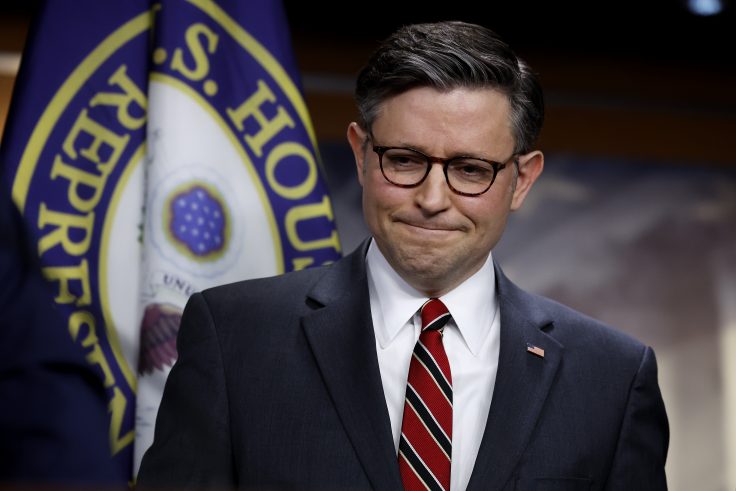Trump’s appointments of Stefanik, Waltz could leave the GOP with exactly 218 seats

The GOP’s House majority is all but confirmed. The size of that majority, however, remains to be seen—and President-elect Donald Trump’s decision to tap two House Republicans for his cabinet means it could shrink to as small as a few seats.
As of Tuesday afternoon, Republicans hold 219 seats—one more than the 218 needed for a majority—to Democrats’ 210, according to election forecaster Decision Desk HQ. Five of the six races that remain too close to call are in California. The sixth is Alaska’s at-large seat.
Republicans are, for now, leading in Alaska and two of the California districts, the 45th and 13th. They are expected to hold on to Alaska. One Republican strategist, who spoke on background to discuss the race candidly, said Democratic incumbent Mary Peltola is “toast” and on pace to lose by roughly 6 points (she trails Republican Nick Begich by 4 points).
The California districts are tighter. In the 45th, Republican incumbent Michelle Steel leads her Democratic challenger, Derek Tran, by less than 2 points. In the 13th, Republican incumbent John Duarte leads Democratic challenger Adam Gray by just over 2 points, though only 63 percent of the vote is in.
Should the GOP prevail in those races, Republicans would enter the House with 222 seats, a 9-seat majority that would be one better than the party’s current standing in the lower chamber. Should the GOP only prevail in Alaska—a conceivable scenario, one operative said—it would hold 220 seats, a 5-seat majority.
Though a two-seat difference may seem insignificant, the final size of the GOP House majority could have major implications for the party and its ability to whip votes.
That’s because Trump has already picked two House Republicans to serve in his administration: Elise Stefanik (N.Y.), Trump’s pick for United Nations ambassador, and Mike Waltz (Fla.), Trump’s incoming national security adviser. Waltz’s position does not require Senate confirmation, meaning he will vacate his seat immediately following Trump’s January swearing-in ceremony. Stefanik does require Senate confirmation to serve as U.N. ambassador but is expected to secure it easily.
Those two vacancies would lower the threshold for a majority to 217 seats. If Republicans secure 220 seats before the vacancies take effect, their majority would sink to just 3 seats in January, with the GOP carrying 218 seats to Democrats’ 215. That three-seat majority would likely hold for at least a few months. While both Stefanik’s and Waltz’s seats are solidly red, special elections in New York and Florida typically take around three and five months, respectively, to complete, according to Politico.
Such a scenario could leave House Republicans without a functioning majority in the case of absences—a circumstance that has occurred in Congress in recent years. During Trump’s first administration, absences from 12 Republican senators prevented the GOP-led Senate from confirming a pair of Trump nominees.
House Speaker Mike Johnson (R., La.) alluded to the tight math during a Tuesday press conference.
“Trump fully understands and appreciates the math here,” Johnson told reporters. “I don’t expect we will have more members leaving, but I’ll leave that up to him.”
Speaker Johnson on concerns Trump will shrink GOP’s expected slim majority in the House by picking more members for his administration:
‘Trump fully understands and appreciates the math here. … I don’t expect we will have more members leaving, but I’ll leave that up to him.” pic.twitter.com/9VUv7vX25c
— The Recount (@therecount) November 12, 2024
Trump is expected to visit the Capitol and meet with congressional Republicans on Wednesday.
Original News Source – Washington Free Beacon
Running For Office? Conservative Campaign Management – Election Day Strategies!
